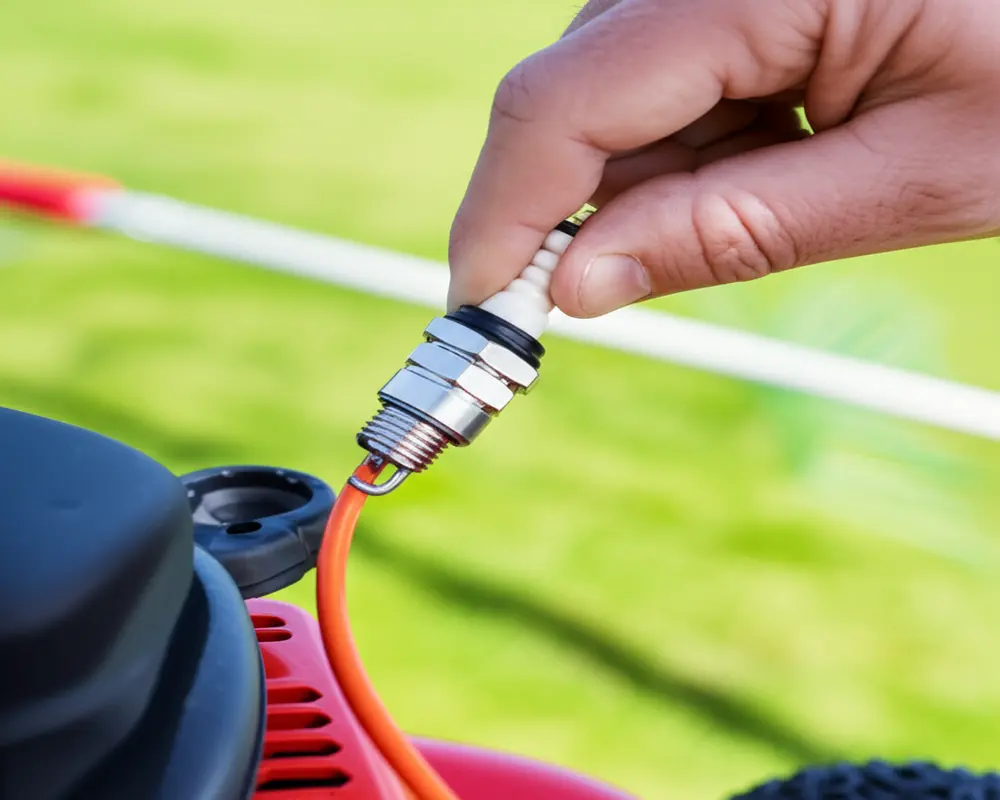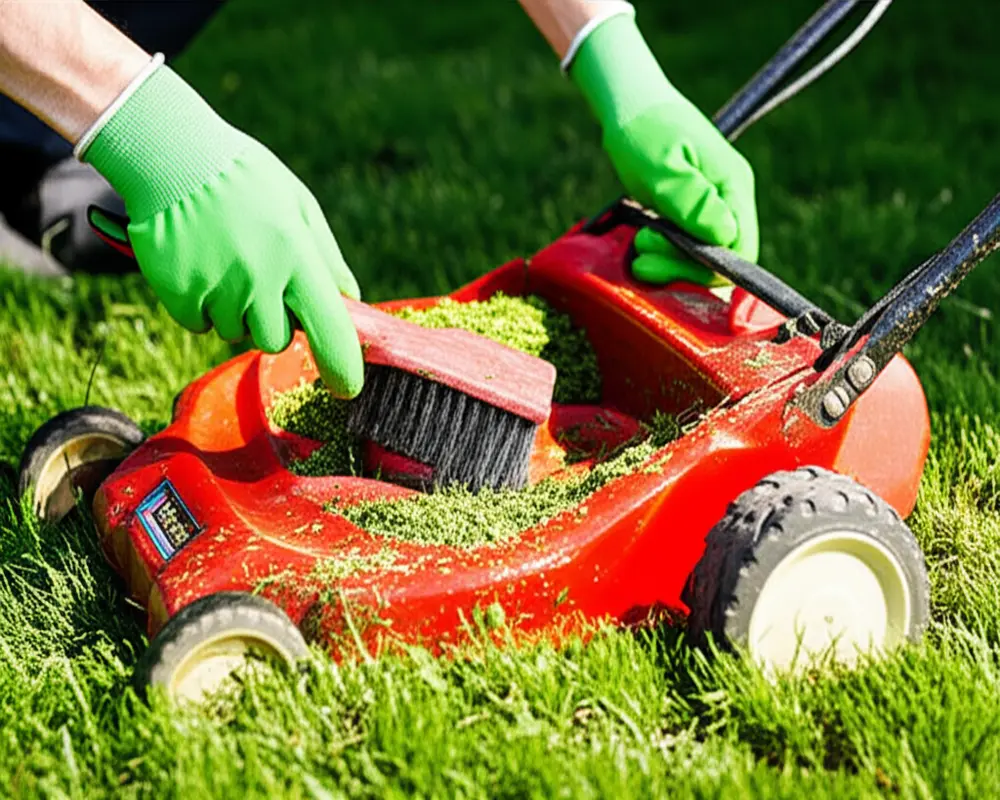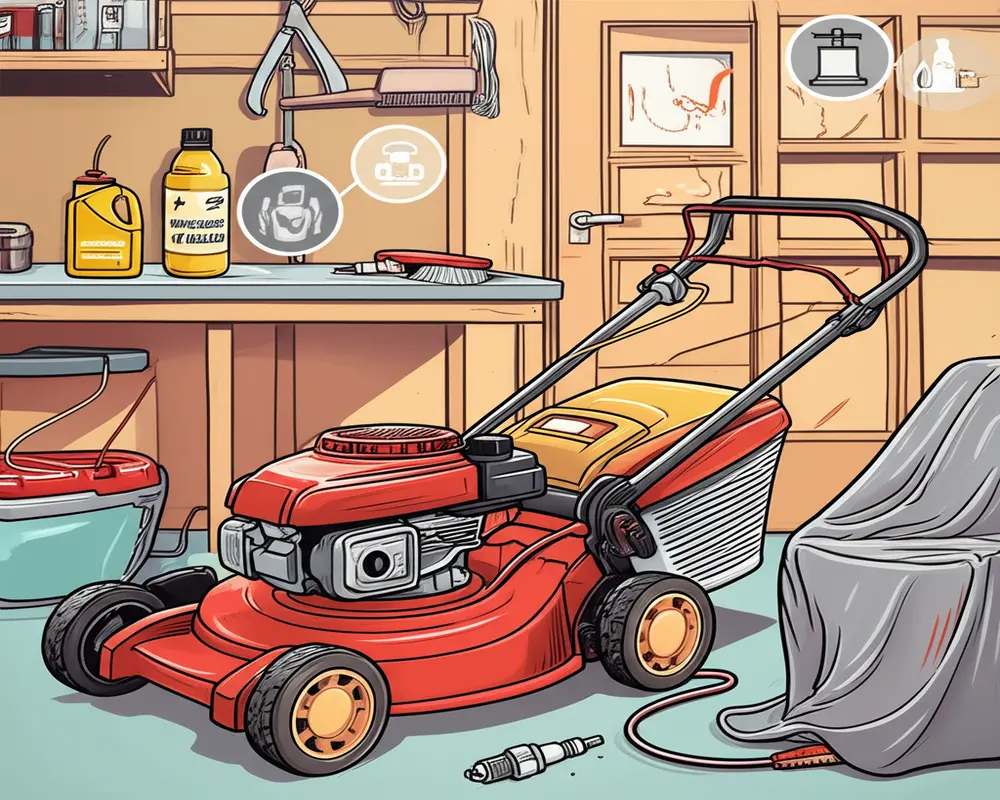The Ultimate Guide to Lawn Mower Storage: Protect Your Investment
Introduction: Why Proper Lawn Mower Storage Matters
Proper lawn mower storage tips are vital to preserve the longevity and performance of your mower. Storing your mower correctly protects it from damage, prevents costly repairs, and ensures safety during off-season periods. Whether you’re putting your mower away for a few weeks or several months, the way you prepare and store it impacts how well it performs next season. This guide covers everything you need to know about lawn mower maintenance, including safety measures, cleaning, fuel management, battery care, and selecting the ideal storage environment.
Thank you for reading this post, don't forget to subscribe!Section 1: Pre-Storage Preparation – The Essential Checklist
1.1 General Safety First
Safety is the first priority before storing your mower. For gasoline-powered mowers, always disconnect the spark plug wire to prevent accidental starts during handling. For electric and riding mowers, remove the battery completely. Wait for the engine to cool down to avoid burns, and wear personal protective equipment such as gloves and eye protection throughout the process.

1.2 Thorough Cleaning for Longevity
Cleaning your mower thoroughly before storage is crucial to prevent rust and pest attraction. Remove all grass clippings, mud, and debris from under the mower deck using a scraper, brush, and garden hose, taking care to avoid wetting the engine and electrical parts. Wipe down the engine, exterior surfaces, and wheels to remove dirt and grime. Replace or clean the air filter to ensure optimal airflow. When cleaning electric mowers, be especially cautious to avoid water exposure to the motor components.

1.3 Fuel Management for Gas Mowers
Proper fuel stabilization for mowers is essential to prevent fuel degradation and carburetor issues during storage. For short to medium-term storage, add a fuel stabilizer to a full tank and run the engine for 5 to 10 minutes to circulate the stabilizer through the system. For very long-term storage, draining the fuel tank and carburetor is recommended; this includes safely disposing of leftover gasoline. Always follow fuel storage safety guidelines, such as storing fuel in approved containers away from heat sources.
1.4 Oil Change Before Storage
Changing the oil before storage removes contaminants that accumulate during use, extending engine life. Drain the old oil completely and refill with the correct oil type recommended by the manufacturer. This step ensures that your engine stays lubricated and protected over the storage period.
1.5 Spark Plug Inspection & Maintenance
Remove the spark plug and inspect it closely. Clean any carbon deposits or replace the plug if worn. For long-term storage of gas mowers, fog the engine cylinder by adding a small amount of oil into the cylinder and pulling the starter cord several times to distribute the oil, preventing internal rust from forming.
1.6 Blade Care: Sharpening & Storage
Safely remove the mower blades using appropriate tools and sharpen them to maintain cutting efficiency. Balanced blades reduce vibration and wear on the mower. After sharpening, lightly oil the blades to prevent rust and store them in a dry place separate from the mower. Prioritize blade safety by handling them carefully and wearing protective gloves.
1.7 Battery Care for Electric & Riding Mowers
Battery maintenance is critical for electric and riding mowers. Remove the battery and clean the terminals to ensure good electrical contact. Store batteries in a cool, dry place, and use a trickle charger if possible to prevent deep discharge, which can shorten battery life. For batteries that cannot be removed, disconnect the negative terminal to minimize power drain.
1.8 Tire Pressure for Riding Mowers
Inflate tires to the recommended pressure to avoid flat spots during storage. For extended storage periods, consider elevating the mower off the ground to relieve tire weight and prevent deformation.
Section 2: Choosing & Preparing Your Storage Location
2.1 Indoor Storage: Ideal Environment
The best place to store your mower is indoors, such as in a garage or shed, where it remains dry, secure, and protected from the elements. Maintaining a stable temperature and low humidity inside the storage space helps prevent corrosion. Proper ventilation is essential, especially for gas mowers, to dissipate any lingering fuel fumes. Implement pest prevention by sealing entry points and covering air intakes.
2.2 Outdoor Storage: When Necessary
If indoor storage is not an option, take measures to protect your mower outdoors. Elevate it on pallets or blocks to keep it off damp ground, and shelter it under an awning or lean-to if possible. Use a durable, breathable, and waterproof cover to shield the mower from rain, snow, and UV rays. Security measures such as locking the mower or securing it with a chain can deter theft.

2.3 Vertical Storage Options for Certain Push Mowers
Some push mowers are designed for vertical storage, which can save space. Confirm compatibility by checking the manufacturer’s guidelines. When storing vertically, ensure fuel and oil precautions are followed to avoid leaks and engine damage.
Section 3: Mower Type-Specific Considerations
3.1 Gas-Powered Mowers
Gas-powered mowers require specific care: stabilize or drain fuel, change the oil, inspect and maintain the spark plug, and fog the engine cylinder for long-term storage. These steps prevent corrosion, fuel system clogging, and engine wear.
3.2 Electric/Cordless Mowers
Electric mowers need battery removal and adherence to charging protocols to maintain battery health. Cleaning should focus on avoiding water exposure to prevent electrical damage.
3.3 Riding & Zero-Turn Mowers
For riding mowers, battery care, tire inflation, thorough deck cleaning, and potential elevation for extended storage are essential to maintain performance and safety.
Section 4: Short-Term Storage (Between Uses)
When storing your mower between uses, perform a quick cleaning to remove major grass clippings. Keep the gas tank at least half full to prevent condensation buildup. Use a light cover to shield the mower from dust and debris, and store it in a sheltered location whenever possible to minimize exposure to weather.
Section 5: Taking Your Mower Out of Storage
Before returning your mower to service, reconnect the spark plug wire and battery. Add fresh fuel or verify the condition of stabilized fuel. Check tire pressure and adjust as needed. Finally, perform a test run to ensure the engine operates smoothly and safely.
Section 6: Troubleshooting Common Storage-Related Issues
Common problems after storage include failure to start due to stale fuel, dead batteries, or fouled spark plugs. Rough idling often points to carburetor gumming caused by old fuel residues. Rust may develop from improper cleaning or storage conditions, and flat tires can result from incorrect pressure or prolonged weight on tires. Addressing these issues promptly maintains mower reliability.
Section 7: Maintenance Log & Reminders
Keeping a detailed log of maintenance activities such as oil changes, spark plug replacements, and storage preparations helps track mower health. Set annual reminders to perform storage maintenance and ensure consistency in care.
Conclusion: Your Mower, Ready for Action
Proper lawn mower storage preserves your investment by extending its lifespan, maintaining performance, and preventing costly repairs. Adopting consistent maintenance and storage routines ensures your mower is always ready for action when the mowing season returns.
Comprehensive Lawn Mower Storage Checklist (Printable)
- Clean mower under deck & exterior
- Stabilize or drain fuel
- Change engine oil
- Inspect/replace spark plug
- Fog engine cylinder (gas)
- Sharpen & oil blades
- Remove and charge battery
- Inflate tires
- Select dry, secure storage location
- Apply protective cover
- Disconnect spark plug wire
Frequently Asked Questions (FAQs)
Q: How long can I store my lawn mower without damage?
A: With proper preparation, a lawn mower can be stored safely for several months, typically the off-season period (3 to 6 months). Long-term storage requires thorough cleaning, fuel management, and battery care.
Q: Should I drain the fuel before storing my mower?
A: For short-term storage, adding a fuel stabilizer is sufficient. For storage longer than six months, draining the fuel tank and carburetor is recommended to prevent gum deposits and carburetor clogging.
Q: How do I care for batteries during storage?
A: Remove batteries and store them in a cool, dry location. Use a trickle charger to maintain charge and prevent deep discharge, which reduces battery lifespan.
For further expert advice on garden tool maintenance, you may find useful insights in our Hand Cultivator Expert Interview and Garden Spade Rust Prevention articles.
External authoritative resources such as Family Handyman and Popular Mechanics also provide detailed guidance on winterizing and storing lawn mowers.

